- The Marvels of Gaudí: A Deep Dive into La Sagrada Familia
- Strolling through Barcelona: Architectural Treasures from Park Güell to the Port
- From Gothic to Modernisme: Understanding Barcelona's Diverse Architectural Styles
- The Impact of Antoni Gaudí on Barcelona's Urban Landscape
- Must-See Architectural Highlights Between La Sagrada Familia and Barcelona Port
- A Walking Tour of Barcelona's Most Iconic Buildings: A Guide for Architecture Lovers
Barcelona, a city teeming with vibrant culture and history, is a canvas of architectural masterpieces that reflect its rich heritage. From the intricate designs of Antoni Gaudí to the modernist influences that shape its skyline, the city's structures tell a story of innovation and artistry.
Join us on a captivating journey, From La Sagrada Familia to Barcelona Port: Exploring the Best of Barcelona's Architectural Wonders, where we will uncover the iconic landmarks and hidden gems that make this city a paradise for architecture enthusiasts. Each site offers a unique glimpse into the past and a vision for the future, inviting all to experience the beauty of Barcelona.
The Marvels of Gaudí: A Deep Dive into La Sagrada Familia
La Sagrada Familia, perhaps Gaudí's most ambitious project, is a stunning representation of modernist architecture. This basilica, still under construction since 1882, showcases an extraordinary blend of Gothic and Art Nouveau styles, highlighting Gaudí's innovative approach to design. Visitors are often captivated by its towering spires, intricate facades, and the play of light through its colorful stained glass windows.
One of the unique features of La Sagrada Familia is its symbolic architecture. Each element of the basilica carries significant meaning, including:
- The Nativity Facade: Celebrating the birth of Christ with intricate sculptures.
- The Passion Facade: Reflecting the suffering of Christ through stark, dramatic design.
- Nature Elements: Gaudí incorporated natural forms, symbolizing the connection between faith and nature.
Inside, the basilica's soaring columns resemble trees, creating a forest-like atmosphere that enchants visitors. The interplay of light and shadow is a testament to Gaudí's genius, as he designed the space to evoke a sense of divine presence. The use of geometry and organic shapes is not only aesthetically pleasing but also serves structural purposes, making his work both beautiful and functional.
As La Sagrada Familia continues to evolve, it remains a symbol of Barcelona's artistic spirit. With each completed section, the basilica draws closer to Gaudí's original vision, promising to be a landmark that will inspire future generations. Its journey from conception to completion is a remarkable tale of dedication, creativity, and a testament to Barcelona's architectural heritage.
Strolling through Barcelona: Architectural Treasures from Park Güell to the Port
As you embark on your journey through Barcelona, a leisurely stroll from Park Güell to the bustling Port reveals a tapestry of architectural treasures. Begin at Park Güell, a vibrant park designed by Antoni Gaudí, where whimsical structures and colorful mosaics create a magical atmosphere. The park's organic shapes and forms reflect Gaudí's deep connection to nature, making it a perfect starting point for your architectural exploration.
Continuing your walk, you will encounter several iconic landmarks that showcase Barcelona's diverse architectural styles. Some must-see highlights include:
- Casa Batlló: A masterpiece of Catalan Modernisme, renowned for its unique facade and imaginative interiors.
- Casa Milà (La Pedrera): Another Gaudí creation, famous for its undulating stone facade and innovative rooftop chimneys.
- Palau de la Música Catalana: A UNESCO World Heritage site that exemplifies the richness of Catalan architecture with its stunning stained glass and intricate mosaics.
As you approach the Port, the architectural landscape transforms dramatically. The juxtaposition of historic buildings alongside modern structures creates a dynamic urban environment. Notable sights include the W Barcelona Hotel, a sail-shaped icon that symbolizes the city's modern waterfront, and the iconic Columbus Monument, which celebrates the explorer's return from the Americas. This area is a testament to Barcelona's continuous evolution in architecture, blending the past with contemporary designs.
Concluding your stroll at the Port, take a moment to appreciate the serene Mediterranean views while reflecting on the rich architectural journey you've experienced. From the enchanting designs of Gaudí to the modern innovations lining the waterfront, Barcelona's architectural wonders offer a captivating narrative that continues to inspire and delight visitors from around the world.
From Gothic to Modernisme: Understanding Barcelona's Diverse Architectural Styles
Barcelona's architectural landscape is a captivating blend of styles, rooted deeply in its historical evolution. From the medieval intricacies of the Gothic Quarter to the fluid forms of Modernisme, the city serves as a living museum showcasing centuries of design innovation. Each era reflects not only the aesthetic preferences but also the cultural and social dynamics of its time.
The Gothic style, prominent from the 13th to the 15th century, features elements such as:
- Pointed arches: These structures are designed to draw the eye upward, creating a sense of grandeur.
- Flying buttresses: A hallmark of Gothic architecture, these elements support the walls and allow for higher ceilings.
- Intricate stone carvings: Many buildings boast detailed sculptures that narrate biblical stories and local legends.
In contrast, Modernisme emerged in the late 19th and early 20th centuries, characterized by an embrace of organic shapes and vibrant colors. Key features include:
- Curvilinear forms: Buildings like Casa Batlló exemplify this style, with their flowing lines and vibrant mosaic tiles.
- Nature-inspired motifs: Architects incorporated elements from the natural world, blurring the line between architecture and organic forms.
- Innovative materials: The use of iron and glass allowed for more elaborate designs and expansive spaces.
This architectural diversity is not just a visual feast but also a testament to Barcelona’s cultural identity. The continual dialogue between the historical and modern styles ensures that the city remains a dynamic hub for both residents and visitors, inviting exploration and appreciation of its rich architectural tapestry.
The Impact of Antoni Gaudí on Barcelona's Urban Landscape
Antoni Gaudí's influence on Barcelona's urban landscape is unparalleled, transforming the city into a living gallery of architectural brilliance. His unique vision and innovative techniques have left a lasting legacy, with structures that challenge traditional design norms. Gaudí’s work integrates nature and spirituality, creating a harmonious relationship between the built environment and the natural world. His masterpieces invite admiration and provoke thought, making them essential stops for anyone exploring the city.
Gaudí's architectural philosophy is evident in several key projects, which not only define the city's skyline but also capture its cultural essence. Among these are:
- La Sagrada Familia: A basilica that continues to evolve, symbolizing faith and creativity.
- Park Güell: A vibrant park filled with colorful mosaics and organic forms that reflect Gaudí's love for nature.
- Casa Batlló: An imaginative residence that challenges conventional aesthetics with its fluid shapes and vivid colors.
Through these structures, Gaudí has not only shaped the architectural identity of Barcelona but has also influenced generations of architects worldwide. His pioneering use of materials and forms has inspired new movements within modern architecture, encouraging a departure from rigidity towards more expressive designs. Gaudí's legacy is a testament to how architecture can embody cultural narratives and human emotion.
As Barcelona continues to grow and modernize, Gaudí's impact remains a powerful reminder of the city's rich artistic heritage. His works are not merely buildings; they are living expressions of a unique vision that celebrates the interplay of form, function, and beauty. Visitors to Barcelona are not just spectators; they are participants in an ongoing story, one that Gaudí started and that continues to unfold in this vibrant city.
Must-See Architectural Highlights Between La Sagrada Familia and Barcelona Port
As you traverse the route from La Sagrada Familia to Barcelona Port, one of the architectural highlights to explore is the Hospital de Sant Pau. Recognized as a UNESCO World Heritage site, this former hospital complex showcases the brilliance of Modernisme architecture with its colorful tiles and intricate sculptures. Designed by Lluís Domènech i Montaner, the hospital's pavilions are connected by beautiful gardens, illustrating a harmonious blend of healthcare and artistry.
Continuing your journey, be sure to visit the Arc de Triomf, an impressive triumphal arch that stands as a gateway to the Parc de la Ciutadella. Built for the 1888 Barcelona World Fair, this striking red-brick structure embodies a mix of Moorish revival and modernist styles. Its detailed friezes and vibrant surroundings make it an ideal photo opportunity, capturing the spirit of Barcelona's historical significance and architectural ingenuity.
As you approach the waterfront, the Palau del Marquès de Comillas awaits your discovery. This stunning building, designed by the architect Domènech i Montaner, exemplifies the late 19th-century Modernisme style with its ornate facade and elaborate detailing. The building's historical significance, coupled with its beautiful design, makes it a key highlight in the transition from the city's vibrant core to the coastal area of Barcelona.
Finally, make your way to the bustling Port, where the juxtaposition of historic and contemporary structures paints a dynamic urban landscape. Here, the W Barcelona Hotel stands out with its sail-like silhouette, offering a modern interpretation of waterfront architecture. This sleek building serves as a symbol of the city's evolution while providing stunning views of the Mediterranean, making it a perfect conclusion to your architectural exploration between La Sagrada Familia and Barcelona Port.
A Walking Tour of Barcelona's Most Iconic Buildings: A Guide for Architecture Lovers
Embarking on a walking tour of Barcelona's most iconic buildings is a dream come true for architecture lovers. This vibrant city offers a stunning showcase of architectural diversity, where each landmark tells its own story. As you wander through the streets, you'll encounter a blend of historical styles and modern innovations that reflect the evolution of the city. Whether you’re an aficionado or a casual observer, every step reveals new perspectives on Barcelona’s rich architectural tapestry.
Start your journey at the Hospital de Sant Pau, a masterpiece of Modernisme and a UNESCO World Heritage site. Its breathtaking pavilions connected by serene gardens exemplify the harmonious blend of form and function. Following this, make your way to the Arc de Triomf, where the intricate brickwork and decorative elements serve as a gateway to the beautiful Parc de la Ciutadella. Here, you can appreciate how the architecture complements the surrounding nature, enhancing the visitor's experience.
As you continue towards the Port, the architectural landscape shifts dramatically. This area is home to both historical edifices and contemporary designs, making it a true reflection of Barcelona's dynamic urban identity. Notable structures include the striking W Barcelona Hotel, with its sail-like silhouette, and the historic Columbus Monument, which stands proudly at the waterfront, commemorating the famed explorer's journey.
In conclusion, a walking tour from La Sagrada Familia to Barcelona Port not only captivates your senses but also provides a deeper understanding of the city’s architectural evolution. Each building serves as a chapter in Barcelona's ongoing narrative, inviting architecture enthusiasts to explore the rich layers of history and creativity that define this remarkable destination.
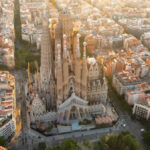 From La Sagrada Familia to Barcelona Port: Exploring the Beauty and Charm of Barcelona's Landmarks
From La Sagrada Familia to Barcelona Port: Exploring the Beauty and Charm of Barcelona's LandmarksIf you want to know other articles similar to From La Sagrada Familia to Barcelona Port: Exploring the Best of Barcelona's Architectural Wonders you can visit the category Blog.
Deja una respuesta

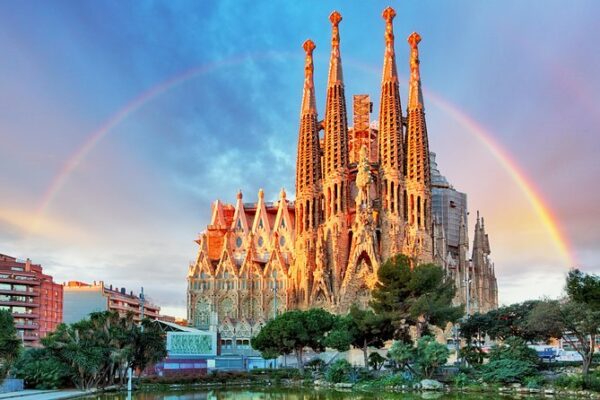
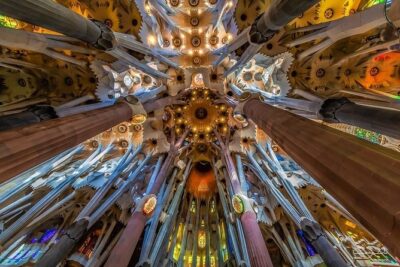
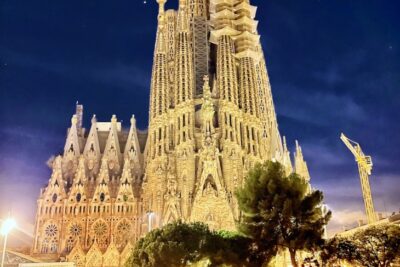
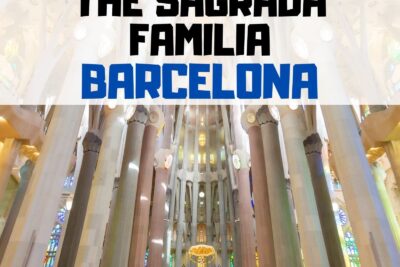
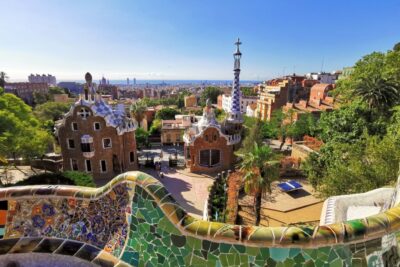
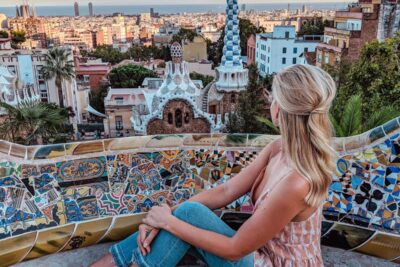

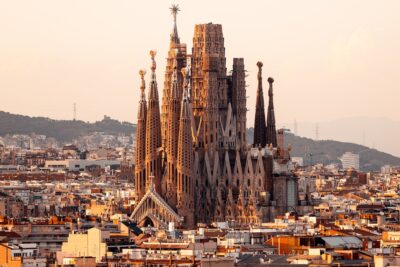
Read more!